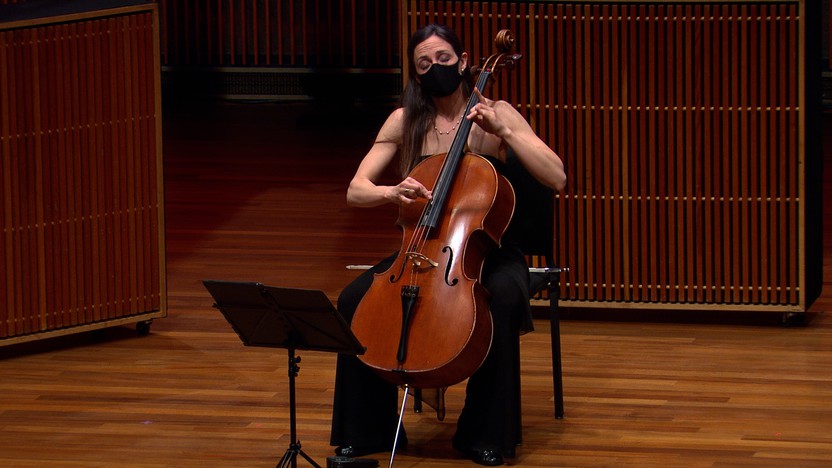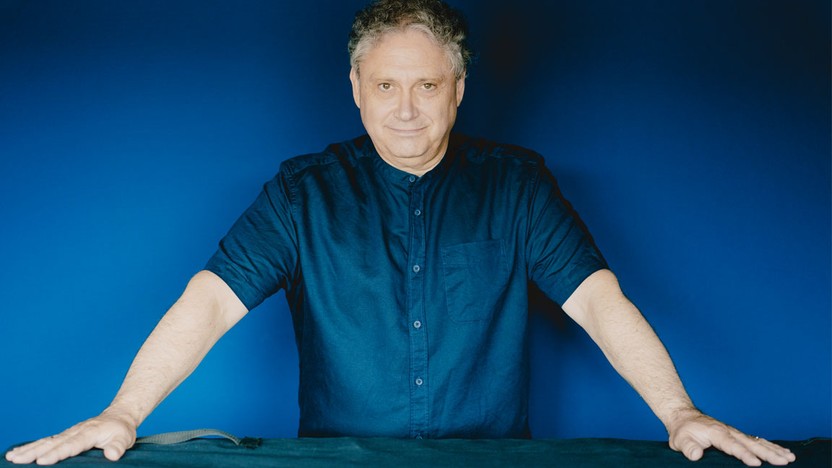Details

Joseph Haydn
Symphony No. 59, Fire (17 min)
Franz Joseph Haydn trained at a prestigious choir school in Vienna until his voice broke at 17. He spent the next twelve years teaching kids and later working for a count of modest means, until at 29 he landed the job that set him on the course to become the most famous composer in the world: In 1761, he joined the fabulously wealthy Esterházy family as their Vice-Kapellmeister, followed by a promotion five years later to Kapellmeister. Initially he was responsible for producing two concerts each week with the court’s private orchestra, and in later years his duties grew to include writing and producing operas. He spent months on end cloistered at the family’s remote summer palace, providing entertainment for the insatiable Prince Nikolaus Esterházy, a pressure-cooker environment in which, as Haydn later wrote, “I was forced to become original.”
One new direction Haydn explored in the late 1760s and early 1770s was the “Sturm und Drang” (“Storm and Stress”) aesthetic that was also cropping up in the theater, literature and art of the time. This tendency toward heightened emotion and drama tends to be associated with Haydn’s music in minor keys, but the same extremes of expression fueled major-key symphonies as well, including the symphony known by the nickname “Fire,” composed around 1768.
The Symphony No. 59 is fiery indeed, especially in the unusually speedy Presto first movement punctuated by shuddering bow strokes from the violins and forte blasts from the horns. The slow movement’s key setting of A-minor brings an unexpected chill to the atmosphere, and the Menuet reinforces the dichotomy of major and minor keys. The finale, heralded by horns and oboes, bristles with the manic energy of a hunt.
Aaron Grad ©2025

Stephen Hartke
Cello Concerto, Da Pacem (SPCO co-commission)
My cello concerto, Da Pacem, takes its title from a Latin hymn that begins “Grant peace in our day.” It is a reflection on these unsettled and unsettling times. As the work’s protagonist, the solo cellist journeys through a considerable variety of musical landscapes.
The first movement is in the tradition of a Renaissance instrumental fantasia, in that it is partially built upon plainchant, both the “Da pacem” hymn and the chant fragment, “In nomine,” which formed the basis of a whole genre of English instrumental pieces from the Renaissance through the time of Purcell.
The scherzo, “In diebus nostris” (“in our day”), bears the tempo marking “nervous, haunted.” Here the soloist sometimes instigates, sometimes reacts, and sometimes willfully ignores the material swirling about. Likewise, some of the orchestral response is at one moment flighty, in the next aggressive, and even, toward the middle of the movement, engaging in a kind of misdirection.
The title of the last movement, “Quis pugnat pro nobis?” (“who fights for us?”), is not quite a quote from the “Da pacem” hymn, but it’s still a good question. In first sketching the piece, I had decided to build the central portion of the movement on “Ain’t you got a right to the tree of life?”, which I first heard as a protest song in the late 60s. While I was working on the close of this section, the news came about the massacre at the Tree of Life Synagogue in Pittsburgh, turning what had begun as an abstract musical elegy into a very real one.
The movement closes with an envoi built upon one further quotation, this time from the Credo of the Da Pacem Mass once thought to be by Josquin Des Pres but now attributed to his younger contemporary, Noel de Bauldweyn. It is a brief latticework of counterpoint using a motif that is clearly in 7/8, which thus rhythmically echoes some other turns of phrase heard earlier in the cello. Following this, the work concludes with a quiet amen.
Stephen Hartke ©2018
 Listen to Audio
Listen to Audio
Ludwig van Beethoven
Symphony No. 8
Upon finishing the Seventh Symphony in the spring of 1812, Ludwig van Beethoven began immediately on his Eighth. He worked on it through a summer retreat in the spa town of Teplitz, where he wrote (but never sent) a heartbreaking love letter to his “Immortal Beloved,” who may have been Antonie Brentano, a married woman from Frankfurt. With the Napoleonic Wars disrupting concert life in Vienna, the Seventh Symphony did not reach the public until the end of 1813, and the Eighth was delayed until February of 1814, in a performance that Beethoven conducted, despite his near-total deafness.
The Eighth Symphony, in its length and instrumentation, is a throwback to Franz Joseph Haydn’s “London” Symphonies from the 1790s. Still, Beethoven’s efficiency should not be confused with complacency; this was a period in which the central thrust of his music was the distillation of each gesture down to its essence, whether it was the imposing “fate” motive of the Fifth Symphony or the jolly intervals and fragments that underpin the Eighth.
The opening passage of the Eighth Symphony is a study in balance: downward motion answered by upward; loud followed by soft. Having offered a full glimpse of the primary theme, Beethoven immediately deconstructs it into its essential, leaping gesture. The leaps segue into the secondary theme (in the “wrong” key, incidentally), and this motive gets hung up too and starts leaping again. Eventually the whole orchestra piles on with jumps up and down in octaves, a gesture that carries forward into the development section.
The second movement, marked Allegretto scherzando, is as close as this symphony gets to a slow movement. Here the object of obsession is a brisk, three-note pattern: short-short-long, usually cast as a leap up and a step down into a target note. The strings juggle this motive like a hot potato under the watchful eyes of clucking woodwinds. Three notes at times reduce down to two, and finally it ends with a shudder on a single pitch.
Having dispensed with the joking in the second movement, the third movement takes the form of a graceful minuet, rather than a more rambunctious scherzo. The warm, slurred string lines offset the dryness of the preceding music, and the contrasting trio section evokes a pastoral air with horn calls and clarinet counter-lines.
The finale flies by at a whirlwind Allegro vivace tempo, which Beethoven specified as 84 measures per minute. (When the violins enter with tremolo figures, each note lasts not quite six-hundredths of a second!) Besides the obvious excitement of such fast music, it invites the ear to draw out larger patterns from within motion that is too quick to process on a note-by-note basis, forming another strategy to crystallize the essence of musical material.
Aaron Grad ©2023
About This Program
Artistic Partner Richard Egarr returns for his final appearance during the 2022.23 season to conduct two ebullient symphonies by Franz Joseph Haydn and Ludwig van Beethoven and an SPCO co-commission, a cello concerto by Stephen Hartke for Principal Cellist Julie Albers. Both the Haydn and Beethoven symphonies bristle with propulsive energy and harmonic surprises. The new cello concerto provides a stark contrast, of which the title, Da Pacem, comes from a Latin hymn that begins, “Grant peace in our day.”
Contribute
SPCO concerts are made possible by audience contributions.
Newsletter
For exclusive discounts, behind-the-scenes info, and more:
Sign up for our email club!


